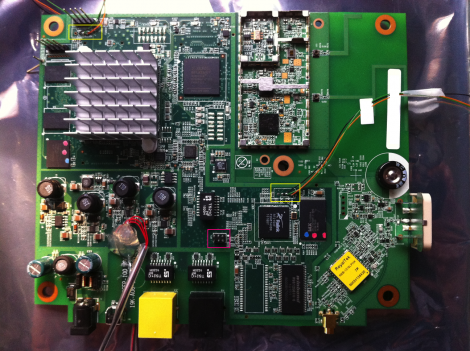
Here’s a picture of the internals of an AT&T Microcell. This hardware extends the cellular network by acting as its own cell tower and connecting to the network via a broadband connection. So if you don’t get service in your home, you can get one of these and hook it up to your cable modem or DSL and poof, you’re cellphone works again. [C1de0x] decided to crack one open and see what secrets it holds.
On the board there are two System-0n-Chips, an FPGA, the radio chip, and a GPS module. There is some tamper detection circuitry which [C1de0x] got around, but he’s saving that info for a future post. In poking and prodding at the hardware he found the UART connections which let him tap into each of the SoCs which dump data as they boot. It’s running a Linux kernel with BusyBox and there are SSH and ROOT accounts which share the same password. About five days of automated cracking and the password was discovered.
But things really start to get interesting when he stumbles upon something he calls the “wizard”. It’s a backdoor which allow full access to the device. Now it looks like the developers must have missed something, because this is just sitting out there on the WAN waiting for someone to monkey with it. Responses are sent to a hard-coded IP address, but a bit of work with the iptables will fix that. Wondering what kind of mischief can be caused by this security flaw? Take a look at the Vodafone femtocell hacking to find out.





Recent Comments